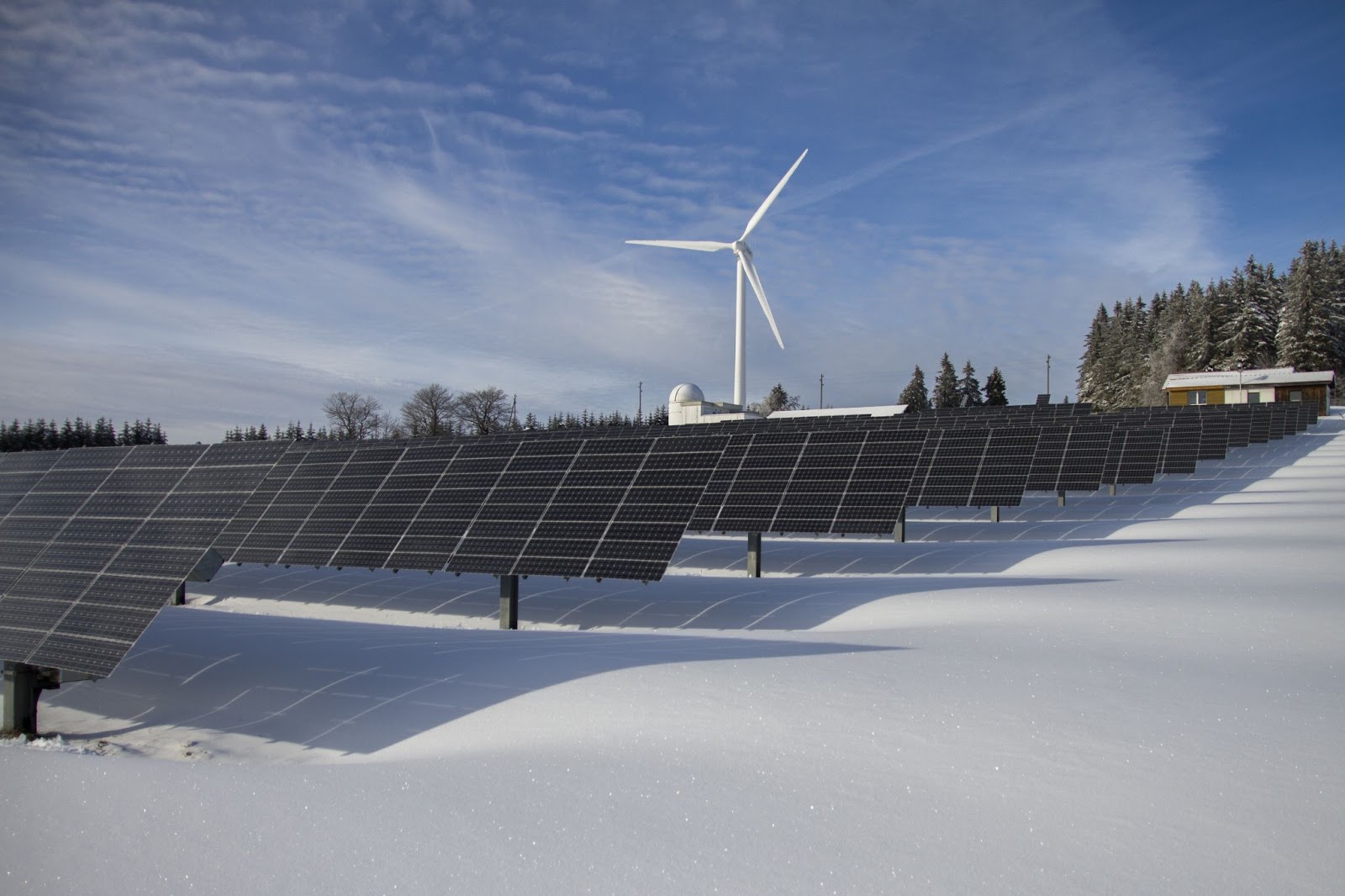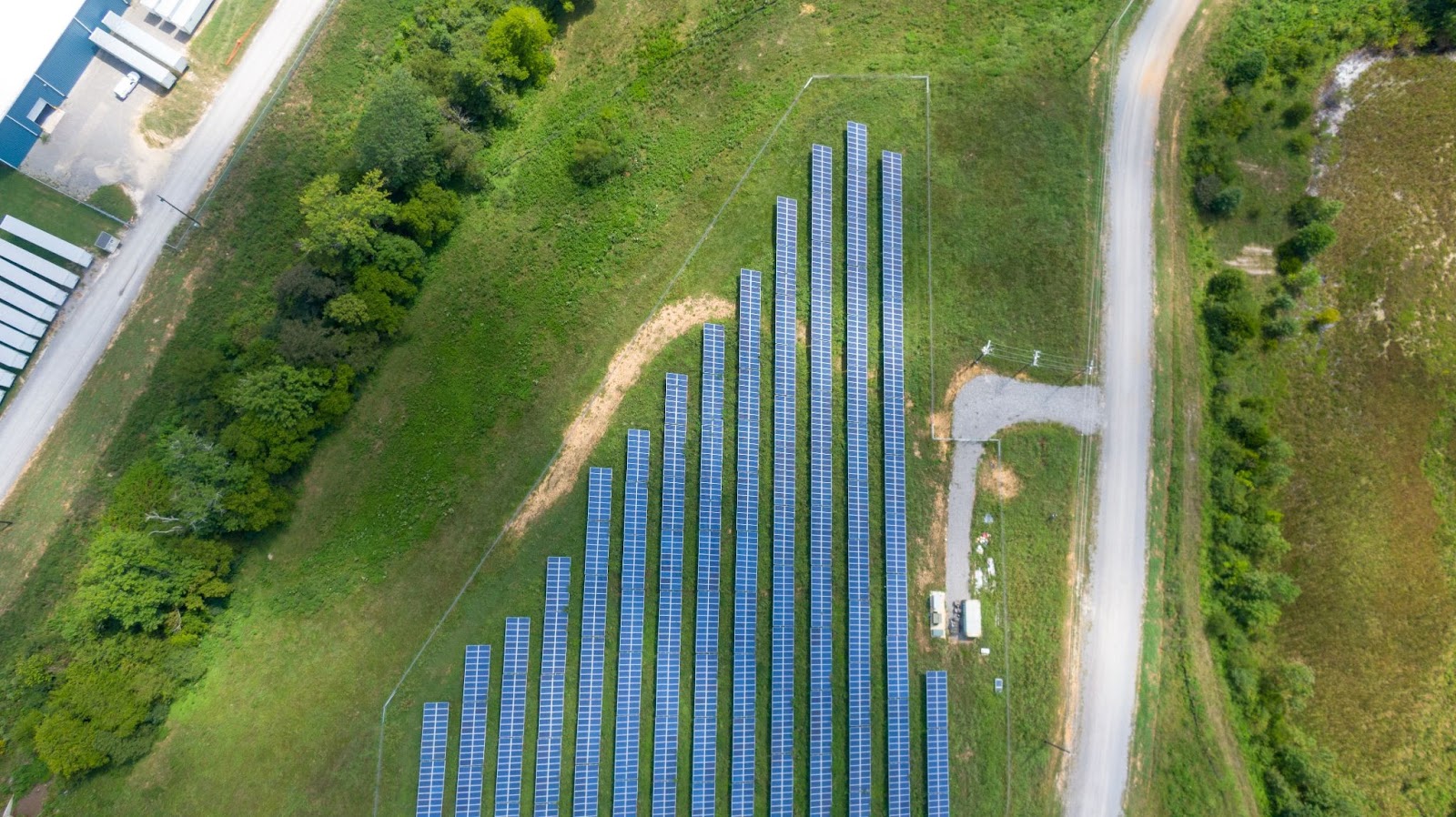How Much Do Solar Panels Cost In California
Highly efficient photovoltaic solar cells crafted using sliced monocrystalline silicon blocks and joined together to form Monocrystalline Solar Panels. These are the most commonly used panels for residential installations due to their higher efficiency rates despite their high costs.
Panel Efficiency | Durability | Cost |
15-20% | Lasts upto 25 years | Expensive |
Monocrystalline Solar Panels are lighter but powerful than other types. Their rigid, black frame design allows them to blend seamlessly with the roof of homes or businesses.
Renowned companies like SunPower started manufacturing Monocrystalline Solar panels in the year 1985, revolutionizing renewable energy generation technology.
Monocrystalline Silicon Technology has been around since the late 1950s in the United States military space program and it was utilized in NASA’s space race efforts in the ’60s.
Polycrystalline solar panels are like a bag of mixed candies, you never know what you’re gonna get in terms of efficiency and power output.
Polycrystalline Solar Panels
Polycrystalline solar cells are a type of photovoltaic technology that converts sunlight into electricity. Looking at their structure, multiple silicon fragments make the panel. In comparison to monocrystalline panels, polycrystalline solar panels are cheaper, less effective in terms of energy conversion rates but they work better in low light and hot conditions.
The following table depicts a comparison between Polycrystalline and Monocrystalline solar panels:
Characteristic | Polycrystalline | Monocrystalline |
Appearance | Speckled blue color and rectangular shape. | Oblong shape with smooth black color. |
Pricing/Per sq foot (as per industry standard) | $0.33 – $0.43 | $0.34 – $0.47 |
Average output per wattage rating as per CEC maximum standards | 16% efficiency with an output range of 270W-325W+/-5% | 17% efficiency with an output range of up to +/-15% depending on the manufacturer’s specifications. |
Another point worth mentioning is that polycrystalline technology can be used in larger installations where higher cost efficiency is needed, such as utility-scale projects or even small residential-scale applications.
I’ve met a retired couple last year who shifted to using polycrystalline solar systems in their housing complex for energy and power generation. They were quite happy with their roofing system after installation, explaining that aside from the lower upfront and installation costs of polycrystalline, it also needs minimal maintenance. Don’t let their thin appearance fool you, these solar panels still have enough juice to power a California-sized ego.
Thin-Film Solar Panels
Utilizing cutting-edge technology, Photovoltaic film panels are a modern variation of solar panels and are commonly known as Thin-Film Solar Panels. These panels are lighter and have a higher level of flexibility than traditional silicon-based solar cells.
Thin-Film Solar Panels | Description | Advantages | Disadvantages |
Cadmium Telluride (CdTe) | The most widely used thin-film system, cost-effective and efficient even in low light conditions. | Low manufacturing costs, able to absorb sunlight at different angles, lower carbon footprint. | Environmental concerns due to the toxicity of cadmium, less durable and shorter lifespan than silicon panels. |
Copper Indium Gallium Selenide (CIGS) | An emerging alternative to CdTe technology. | Inherently flexible, more efficient with higher conversion efficiency rates compared to other thin-film technologies. | Safe disposal can be a challenge due to potentially hazardous elements. |
Pro Tip: To ensure maximum efficiency from Thin-Film Solar Panels, optimal installation is key. Location and direction must be taken into account for optimum performance.
Going solar in California might cost you an arm and a leg, but trust me, it’s worth it to save the planet and impress your neighbors.

Average Cost of Solar Panels in California
To learn about the average cost of solar panels in California with different types, dive into this section. You’ll get to know about the cost comparison between various solar panel types, such as monocrystalline, polycrystalline, and thin-film. These sub-sections will provide you with a quick solution for understanding the pricing of solar panels in California.
Cost of Monocrystalline Solar Panels
When it comes to the Price of Monocrystalline Solar Panels in California, it is crucial to understand that the cost is subjective to various factors such as brand, efficiency rating and panel size. However, the average price range for these solar panels is estimated between $3.6 and $4.2 per watt.
To give you a better understanding of the Cost of Monocrystalline Solar Panels in California, we’ve created a table with actual data on current average prices for popular brands like LG, SunPower, and Canadian Solar. The table below shows prices per watt of different sizes.
Brand | 330W | 360W | 400W |
LG | $1.35 – $1.70/W | $1.40 – $1.80/W | $1.50 – $1.95/W |
SunPower | $2.60 – $3.00/W | $2.75 – $3.20/W | N/A |
Canadian Solar | $0.95 – $1.06/W | N/A | N/A |
It is worth noting that prices are not static and can fluctuate depending on various factors such as market trends and ongoing promotions.
Aside from the standard pricing brackets, it’s vital to evaluate additional costs such as installation fees or any necessary permit requirements from your local county or city council.
If you’re planning to invest in Monocrystalline Solar Panels for your home or business, there are several things you can consider to lower overall costs:
- Purchase during off-seasons when there are typically more significant discounts.
- Compare quotes from multiple suppliers/contractors before making any purchase decisions.
- Opt for smaller panel sizes if you have space constraints.
Always remember that the upfront investment may seem steep but realize that solar panels pay themselves back in savings over time; this option preserves the environment by generating renewable energy while reducing your utility bill. Polycrystalline solar panels may be cheaper, but they’ll never have the same shine as their monocrystalline counterparts, just like cubic zirconia will never be a diamond.
Cost of Polycrystalline Solar Panels
Polycrystalline solar panel costs are an important consideration when you’re switching to eco-friendly energy. Below is a table outlining the cost of Polycrystalline solar panels in California. It is crucial to note that these prices only represent the average, and prices may vary based on installation location, installer fees, any additional hardware required, and other factors.
Size of Panels | Average Cost |
5 kW | $12,935 |
6 kW | $15,878 |
8 kW | $21,957 |
10 kW | $28,310 |
12kW | $34,644 |
It’s worth noting that larger solar systems tend to result in a lower price per watt compared to smaller systems.
When considering the cost of polycrystalline solar panels alone, it’s essential not to overlook solar incentives offered by federal and state governments. These incentives can significantly reduce your overall net cost. Additionally,’ free’ installation from some companies can make a significant difference.
A friend shared her experience with me: She installed these panels for home use as backup power during weather emergencies. She was pleased with how little she spent on electricity bills after installing the panels and appreciated having them when California endured heat waves.
Why settle for a thin wallet when you can have thin-film solar panels instead?
Cost of Thin-Film Solar Panels
When it comes to Solar Panel installation, the cost of Thin-Film Solar Panels is a crucial factor that needs to be considered. Thin-film solar panels are less expensive and lighter in weight compared to traditional solar panels. Hence, the cost of installing them is relatively lower in California.
Here is a table depicting the Average Cost of Thin-Film Solar Panels in California:
Type of Thin-Film Panel | Average Cost ($/Watt) |
Copper Indium Selenide | $0.76 |
Cadmium Telluride | $0.64 |
Amorphous Silicon | $0.59 |
It’s worth noting that prices vary depending on several factors like location, supplier, and warranty period. While Copper Indium Selenide is slightly more expensive than other types, it has the highest efficiency rate among thin-film materials.
In recent years, technological advancements have also led to an increase in efficiency levels and a reduction in costs for thin-film solar panels. According to a report by the National Renewable Energy Laboratory (NREL), researchers have achieved up to 30% conversion efficiencies for thin-film solar cells which may further decrease the cost.
According to SEIA (Solar Energy Industry Association), California ranks first in total installed solar capacity in America with over 22 GW systems installed so far. With such high adoption rates and advancements happening within the industry, we can expect more affordable pricing and better technology from Thin-Film Solar Panel manufacturers soon.
“Why is solar energy so expensive in California? It’s like trying to convince a farmer to switch from his trusty old mule to a Tesla.”
Factors Affecting The Cost of Solar Panels in California
To understand what affects the cost of solar panels in California, this section with the title “Factors Affecting the Cost of Solar Panels in California” with sub-sections, “Size of the Solar System,” “Brand and Manufacturer,” and “Installation Cost” can provide solutions. These sub-sections highlight the key factors that play a crucial role in determining the overall cost of owning a solar system in California.

Size of The Solar System
Solar System Size in California
The size of the solar system is a crucial factor affecting the cost of solar panels in California. A larger solar panel system will generate more power, but it will also cost more to install.
Size (kW) | Average Cost ($) |
3 | $9,255 |
5 | $15,425 |
7 | $21,595 |
10 | $30,850 |
Additionally, the size of a solar panel system determines how many panels are needed and the overall surface area required for installation. This information is vital to ensuring that the residential or commercial property can house the necessary equipment without compromising on aesthetic values.
For those looking to invest in solar panels in California, it is essential to consider the size of the system carefully. While investing more upfront may seem intimidating at first, a larger solar panel system will pay off with higher energy savings and reduced dependence on traditional utility services. Don’t miss out on this opportunity to save money and become environmentally responsible by taking advantage of solar power technology.
Choose wisely, because a cheap brand of solar panels may leave you watching your savings go up in smoke.
Brand And Manufacturer
When it comes to the origin and branding of solar panels, many factors affect their cost in California. One major consideration is the reputation and quality of the manufacturer. Renowned manufacturers with a long-standing history of producing high-quality solar panels will naturally charge more for their products than competitors lacking that level of prestige.
To illustrate this point, it’s worth noting some actual data on brand and manufacturer pricing. The following table shows average prices for popular brands of solar panels in California:
Brand Name | Average Price ($) |
LG | $3.50 |
SunPower | $4.00 |
Canadian Solar | $2.80 |
JinkoSolar | $2.30 |
As you can see from the data presented in this table, there is a significant difference in pricing between different brands and manufacturers. Such variation is due, at least in part, to differences in production costs as well as the differing levels of experience across manufacturers.
It’s noteworthy that while brand name recognition when it comes to solar panels is crucially linked with pricing, there are many other unique considerations that are impacting price within this industry as well. These include aspects such as property location and energy usage requirements.
Interestingly, prior to demand driven by climate change and global warming concerns driving solar panel sales into mainstream popularity recent years, prices were considerably higher overall than they have become today. Thanks largely due to advancements made with renewable energy technology over recent decades which has allowed for greater affordability overall for consumers investing in renewable energy solutions moving forward into the future.
Why pay a fortune for a gym membership when installing solar panels can give you a workout and save you money at the same time?
Installation Cost
The cost of setting up solar panels in California includes installation fees. These expenses depend on various factors, such as the complexity of the installation, system size, labor costs, and permitting fees. A larger system that requires more work may cost more to install than a smaller one. Labor costs also vary with location, with urban areas tending to be pricier than rural ones.
Additionally, permit processing fees and other paperwork must be taken into account when calculating the final cost. The required permits can vary depending on where you live and what kind of solar energy system you are purchasing. These permits can add up quickly and are highly regulated in California.
Notably, it is important to use high-quality materials while installing solar panels; using substandard materials may lower the initial costs but will increase maintenance expenses later on. Therefore, selecting good quality products from reputable suppliers is important for a long-term investment in your home’s energy efficiency.
According to a recent study conducted by Berkeley Lab, the average installation cost per watt of solar energy in California was $3.70 in 2020 (source). This study suggests that homeowners should expect to pay around $18,500 for a 5-kilowatt solar panel system before any tax incentives or rebates.
Saving money never looked so bright – with solar panels, you can enjoy sunny skies and even sunnier savings!
Savings And Financial Benefits of Solar Panels in California
To understand how you can save money and reap financial benefits by switching to solar energy in California with “The Cost of Solar Panels in California by Type” article, dive into this section which focuses on the various ways that solar panels can provide savings. The sub-sections will cover federal tax credits and rebates, state and local incentives, and long-term savings.
Federal Tax Credits And Rebates
Federal Incentives for Solar Power in California
The Federal government provides incentives for solar panel installation through tax credits and rebates. These incentives help homeowners and businesses save money while reducing their carbon footprint.
Incentive | Amount |
Federal Investment Tax Credit (ITC) | 26% of total system cost |
Federal Business Energy Investment Tax Credit (ITC) | 10-30% of total system cost |
Federal Grant Program for Renewable Energy Systems and Energy Efficiency Improvements | $50,000 maximum incentive amount per project |
In addition to the federal incentives listed above, the state of California offers additional incentives. For example, the California Solar Initiative provides cash back to customers who install solar panels on existing homes.
A local business owner recently installed solar panels on their commercial property in California and received a substantial tax credit from the federal government. This helped them significantly reduce their energy bills, allowing them to reinvest that money back into their business. It’s like getting a golden ticket from Willy Wonka, except instead of chocolate, you get cash incentives for going solar in California.

State And Local Incentives
For those interested in installing solar panels in California, there are numerous state and local incentives available that can help offset the costs. Here are some of the incentives available:
- Rebates: The California Energy Commission offers rebates for solar panel installations through their New Solar Homes Partnership program.
- Tax Credits: State and federal governments provide tax credits for solar panel installations which can reduce the total installation costs.
- Net Metering: Electricity providers give credits for any excess energy produced by the solar panel system, which can be used to offset future electricity bills.
- Pace Financing: This program allows homeowners to finance up to 100% of their solar panel installation costs through their property taxes.
- Solar Access Rights: This guarantees homeowners the right to install and use solar energy systems on their property without any restrictions from homeowner associations or other similar organizations.
It’s important to note that eligibility requirements and incentive values vary based on location. Additionally, several cities and counties offer additional incentives such as reduced permit fees.
Pro Tip: Always research and double-check eligibility requirements for incentives before making decisions about solar panel installations.
Don’t let the sun set on your savings – go solar and enjoy long-term financial benefits in California.
Long-Term Savings From Solar Energy
Solar Power Financial Benefits in California
Installing solar panels can provide significant long-term savings for homeowners in California. By generating electricity from sunlight, solar panels can reduce monthly utility bills and, over time, pay for themselves through energy cost savings. Additionally, solar panel owners in California may take advantage of state and federal tax credits to further reduce the cost of installation.
In terms of unique details, it is worth noting that many solar panel systems come with warranties of up to 25 years, which can provide additional peace of mind. Moreover, because solar panels do not require any moving parts to operate, they require minimal maintenance and have a much longer lifespan than traditional energy sources.
To maximize savings from solar energy in California, consider utilizing net metering programs offered by utility companies. These programs allow homeowners to sell excess energy generated from their solar panels back to the grid at market rates. Additionally, installing a battery storage system can help maximize energy self-sufficiency and ensure reliable power during outages.
Overall, investing in solar panels offers long-term financial benefits for Californians. By taking advantage of available incentives and provisions like net metering and battery storage systems, homeowners can mitigate initial installation costs while enjoying significant energy cost savings over the life of their solar panel system. Go big or go home – why settle for a tiny solar panel system when you can power your whole neighborhood?
Choosing The Right Solar Panel Type And System Size in California
When considering solar panel options in California, it’s important to choose the right type and size for your needs. Below is a comparison of various solar panel types and system sizes available in California.
Solar Panel Type | Average Cost per Watt | System Size (kW) | Average Total Cost |
Monocrystalline Solar Panels | $3.55 | 5 kW – 15 kW | $17,750 – $53,250 |
Polycrystalline Solar Panels | $3.20 | 5 kW – 15 kW | $16,000 – $48,000 |
Thin-Film Solar Panels | $2.95 | 5 kW – 15 kW | $14,750 – $44,250 |
It’s important to note that while thin-film solar panels may seem more affordable, they also tend to have lower performance and efficiency compared to monocrystalline or polycrystalline panels. Moreover, beyond just selecting the right type of solar panel, one must consider additional factors such as shading on the roof or geographical location.
A San Diego family recently invested in a high-performance monocrystalline solar panel system for their home and were able to pay off their initial investment within six years thanks to the energy savings. With net metering offered by their local utility company and federal tax incentives, they continue to enjoy substantial savings on electricity costs – paving the way for a more sustainable future for themselves and their community.





